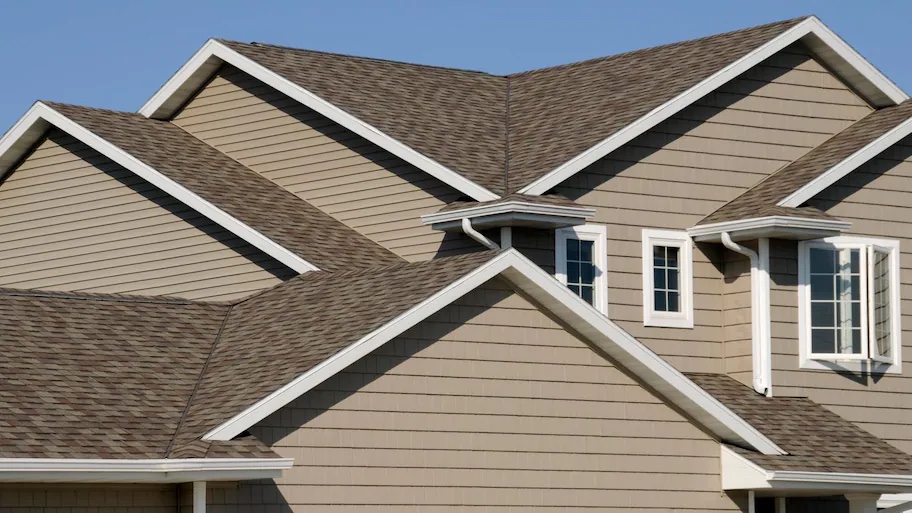
When Should You Replace Your Roof?
February 21 2023
Replacing a roof can be a daunting task, both in time and expense. We found this great article on Angi with all you need to know about replacing or repairing your roof!
Though a good roof will last for decades, chances are you’ll be tasked with planning a roof installation during your time as a homeowner. However, installing a roof is not as simple as calling and booking a next-day appointment. Picking a time of year for your roof installation is actually a crucial part of this process because the season you pick will affect many aspects of the installation, including the total project cost and the average time it will take.
Figuring out the best time to install a roof requires considering critical factors such as weather conditions, prices, and contractor availability. We broke down the pros and cons of each season below so you can plan your roof installation with confidence.
Busy vs. Slow Seasons
Particular seasons may be more or less in demand for roof replacements depending on outdoor temperature, weather conditions, and customer needs. Consequently, picking the season for your roof installment is a critical part of the planning.
Note: Depending on your local climate and conditions, seasonal demand can vary; if you’re not sure about which seasons are considered busy and slow, your best bet is to contact a roofing company in your area who can answer your questions.
Although picking the season for your roof installment is important, there are situations where you may need repair or a replacement immediately and can’t pick the season. Scenarios where you need immediate service might include:
-
Missing shingles
-
Exposed light
-
Damaged flashing
In these cases, you’ll want to act as quickly as possible and develop the safest plan of action. But, if you have some wiggle room in your timeline, here are some essential pros and cons for roof installations during each season.
1. Winter: Very Slow
Pros:
One advantage to winter roof installation is that in a slow season, prices typically decrease and availability increases. Planning a winter roof installation allows you to be more confident that you won’t have trouble with scheduling availability.
Cons:
Weather conditions are the biggest disadvantage, as extreme cold temperatures and conditions can damage roofing materials. For instance, shingles can only be installed in temperatures above 40 to 45 degrees.
In addition, harsh conditions (ice, snow, sleet) make roof materials more vulnerable to damage, resulting in a less durable roof. Not only does the weather affect the materials, but workers will need more breaks, so progress can be slower than it would be in warm weather.
Bottom line: If you don’t want to worry about planning ahead for the busy seasons, or if you’re looking to pinch pennies, winter might be the season for you. Just be wary of harsh weather conditions that can slow things down.
2. Spring: Somewhat Busy
Pros:
The extreme temperatures of winter and summer are less than ideal for roof installations, but spring offers cooler weather and less humidity. These conditions reduce the risks of moisture damage and also tend to be more comfortable for workers. As a result, you can complete the project more efficiently.
Cons:
As the weather gets warmer, the roof installation season becomes busier. In turn, contractors tend to raise their prices. Additionally, with spring often comes stretches of rain and unpredictable conditions, resulting in a longer installation.
Note: Since spring showers tend to slow down in the later months, consider planning for May to June to avoid excessive rain. Roofing companies likely won’t be totally booked yet, but it’s still important to remember that spring is much busier than winter, so plan ahead.
3. Summer: Unpredictable
Pros:
Summer roof installations can be quite successful if you plan your installation at the right time. Although the middle and the end of the summer are typically too hot and humid, the beginning is ideal for roof installation. The humidity and extreme heat have not yet set in, and there is less rain, making for more consistent weather—better for both the workers and the materials.
Cons:
The early summer can be a very popular time for roof installations, which means you could have trouble with scheduling. During the middle of the summer, many places tend to get very hot and humid. In these extreme conditions, workers will require more breaks, which results in a longer process.
Additionally, shingles are not meant to set in very high heat and can then be less durable. Installing a roof at extremely high temperatures can even result in shingles melting.
4. Fall: Very Busy
Pros:
Most contractors and roof installation pros will say that fall is the optimal time for roof installation for a few reasons. The weather has cooled after summer and tends to be quite consistent, allowing workers to have longer and more productive days. Plus, this weather is best for shingles to set and seal effectively before the extreme weather of winter.
Cons:
Fall’s major downside might seem small, but it is crucial to recognize when planning. This season can be very busy, with tons of people starting their installations and contractors getting booked up quickly. The slots for appointments can become limited, and prices may shoot up, so it’s best to plan months in advance to lock in your roof installation and avoid last-minute planning.
What to Expect During a Roof Installation
In ideal conditions, workers can tear down and replace a roof in anywhere from one to four days. However, when weather conditions are less than ideal, installations can take anywhere from one to six weeks. Roof installation costs usually range from $5,000 to $16,000 but will depend on various factors, such as location, house size, and roof size.
You’ll also want to talk to your roofer about their process for keeping your yard clear of debris.
“Old shingles from your roof will need to be placed in a refuse container as they’re removed,” says Zach Reece, owner and chief operating officer at Colony Roofers. “You should not be required to supply this container, nor should you be responsible for disposing of the trash once the job is completed.”
Reasons for Replacing Your Roof
It’s a good idea to check your roof’s functionality from time to time, but problems aren’t always visible. Check the date of your current roof installation to see how much life it has left and figure out if you might need a new roof soon. Typically, shingle roofs last 20 to 25 years, while roofs installed over a layer of shingles usually need to be replaced after 20 years.
Pro tip: Shingles should always lie flat—if you spot cracked patches, buckling shingles, or other damages, it’s time for a repair.
Common reasons for replacements include leaky roofs, damaged shingles, and unwanted roof plants such as mold or fungi.
Roof Replacement vs. Repair
Considering the somewhat hefty cost of a roof replacement, you should carefully determine if your problems could be fixed with repairs before committing to a full-on replacement. Below are some scenarios in which it may be more logical to get your roof repaired than replaced:
-
The damage is minor
-
A replacement is not in your budget
-
You need service with short notice
Note: If you’re not sure of the best course of action, you can contact a roofing company near you and discuss the situation.
Although some roof damage only requires a repair, there are some situations in which it’s absolutely necessary to go all the way and get your roof replaced.








